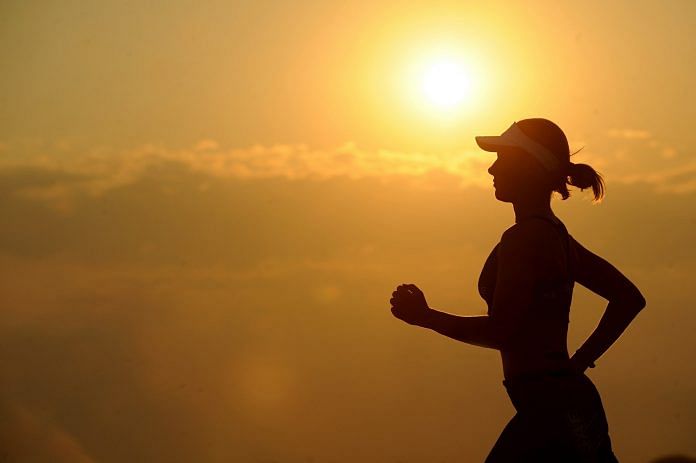New Delhi: Urban India is shunning the sunlight and in the process, grappling with an epidemic — a deficiency of Vitamin D.
With or without symptoms, doctors are diagnosing almost every urban Indian with the deficiency of a vitamin that is manufactured in the body when the skin is exposed to sunlight. Vitamin D helps in the absorption of calcium and its deficiency can lead to bone diseases such as osteoporosis along with other muscle and nerve-related diseases. It also increases the chances of developing diabetes.
Medical practitioners — general physicians, paediatricians, neonatologists and orthopedicians — say they are diagnosing an estimated 80 per cent of patients with vitamin D deficiency every day.
“If I consult 10 patients a day… If not all 10, then at least eight of them are diagnosed with the deficiency,” said Dr Gaurav Rathore, associate director, department of orthopaedics and joint replacement, Jaypee Hospital, Noida. “The cases are soaring.”
According to Dr Ambrish Mithal, head of the endocrinology department at Medanta, “At least 80 per cent of urban India is already under the grip of the deficiency. And the way it is spreading, it could easily be termed as an epidemic.”
It’s not just adults, said Dr Amit Patil, consultant, neonatology, Aster CMI Hospital in Bengaluru. “Almost 12 to 25 per cent of infants are prone to be diagnosed with the shortage due to the lack of Vitamin D in their mother’s milk,” Patil said.
Considering the widespread nature of the deficiency, checking Vitamin D levels is becoming the new norm for medical practitioners.
“A level of 20 nanograms of Vitamin D is considered normal,” said Dr S.P. Byotra, chairman, department of medicine at Sir Ganga Ram Hospital, New Delhi. “Now, it’s a routine to check its level along with other important tests such as complete blood count and cardiac profile.”
Byotra added that apart from its known effects, Vitamin D deficiency can be a root cause for several other life-threatening diseases.
“From general pain in bones and irritability, the deficiency of Vitamin D can cause severe diseases as well,” he said. “It reduces the immunity of the body to fight infections and makes the body vulnerable for several killer diseases such as cancer, brain disorders and heart problems.”
Also read: There’s a science behind suicides, just like any other public health issue
A growing epidemic
In 2013, 40 per cent of Indians were estimated to be Vitamin D deficient — half of the current estimates.
Experts say that a growing lack of exposure to sunlight and a mainly vegetarian diet has led to the current numbers in the urban population.
“Urban people use sunscreens to prevent tanning which limits the absorption of sun rays into the skin,” said Dr Sumita Saha, consultant paediatrician at Fortis Hospital, Anandapur, Kolkata. “Also, there is research in progress to understand if smog, caused by increased air pollution levels, is blocking the absorption.”
A survey by the Associated Chambers of Commerce and Industry of India (ASSOCHAM), a trade lobby, conducted between October 2017 and March 2018, found that over half of the population in Delhi, one of the worst smog affected cities, is suffering from Vitamin D deficiency.
The survey found that those in the 21-35 age group had the maximum insufficiency, with a majority unaware of the deficiency in their bodies.
In contrast, according to research by Dr Mithal from Medanta, only 30 per cent of the rural population, mainly women, reported low Vitamin D levels.
“Rural people, especially men, are not found with the deficiency as they expose themselves to a lot of sunshine,” Dr Mithal said. “Rural women, however, have the deficiency because they are generally covered from head to toe and women generally have low calcium levels in the menopausal age.”
Vitamin D and how it works
The human body makes Vitamin D from cholesterol when the skin is exposed to sunlight.
Vitamin D is required mostly by dark-skinned people who have large amounts of the pigment, melanin, in their skin. “The UV rays in the sunshine that enters our body through the skin is absorbed by the melanin. The more melanin in the skin, the less sunshine is available for the manufacture of Vitamin D,” said Dr Mithal.
“For instance, people who live near the equator — which has maximum sunshine — are dark coloured but naturally, they are placed in geographies where they get abundant sunshine,” she added. “Similarly, people in Norway don’t need a large amount of sunlight, which is not available to them.”
The cure for this deficiency is the consumption of supplements along with calcium-rich food apart from ensuring sufficient exposure to sunlight and animal protein, in essence, a non-vegetarian diet.
“Spending at least half an hour in sunlight with exposure of face and arms is the minimum requirement to fight the deficiency apart from taking supplements that are mostly harmless,” said Rathore of Jaypee’s Noida hospital.
“Infants should get exposure of the sun, at least 10 to 15 mins a day, which generates 10 to 20,000 of Vitamin D units,” said Patil of Aster CMI. “Along with that, experts also suggest Vitamin D supplements until the age of 1 year depending on the condition to combat the deficiency.”
Also read: India’s copycat drugs could do serious harm to patient health, says US pharma lobby



